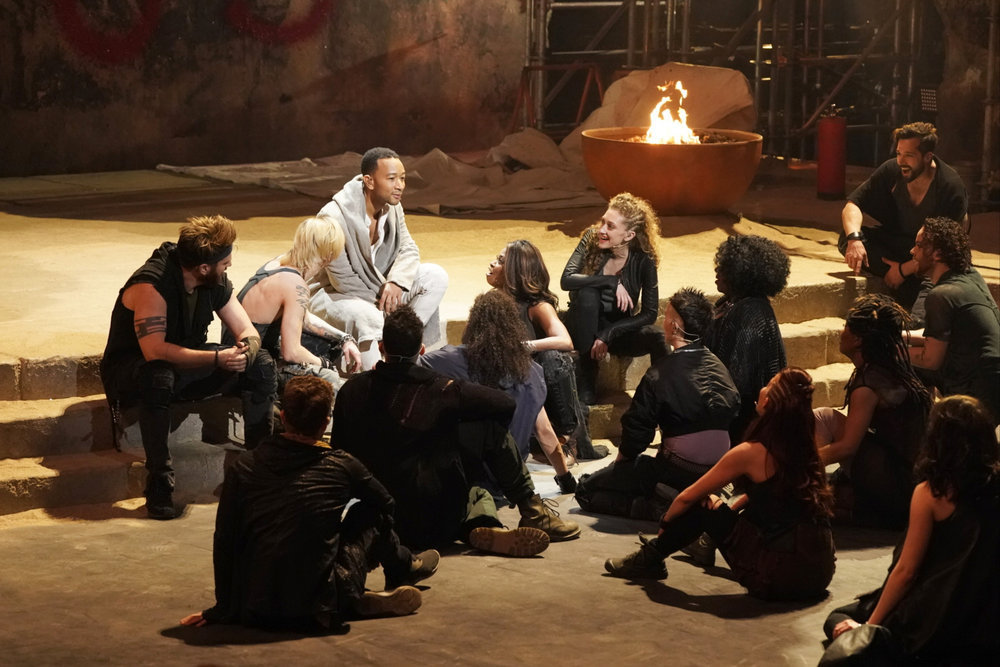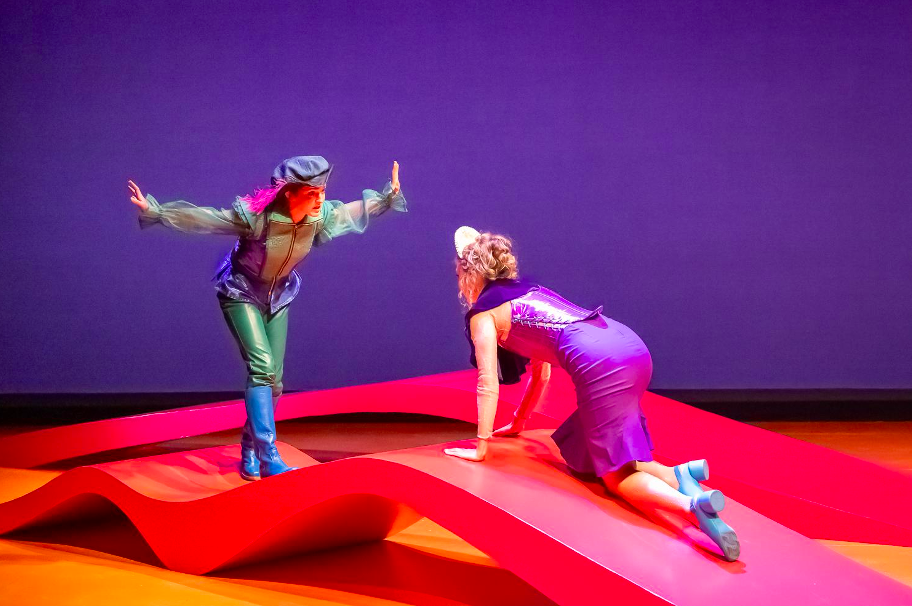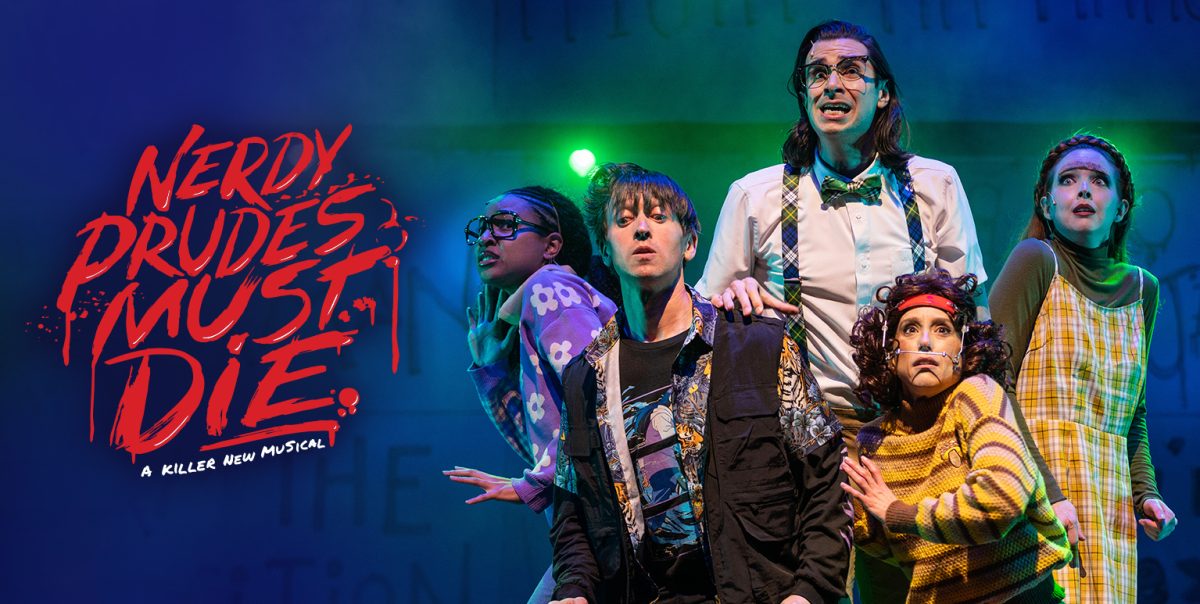
The performance falls somewhere between circus and theater with its impressive acrobatics and implied themes. There is something for everyone in this one-of-a-kind performance.
Before the show begins, there is a pre-show, of sorts, as the last of the audience enters in. Clowns wander around the stage doing simple tasks.
The absurdity of clowns dusting or having a wordless conversation is enough to entertain those who are early, and at the same time encourages the arriving audience members to find their seats, so that the show can begin.
There are ten different acts in “Alegria.” In tribute to the traditional circus, a ringmaster introduces a petite girl who swings, flips, and twirls on a trapeze that seems to go out into the audience, who soon become part of the show.
Let the front row be warned: there is a great deal of audience interaction. The clowns, who provide comic relief through parodies of the elegant and exciting acts, pull audience members to dance or to assist them in performing their version of tricks. Everyone gets a chance to get in on the action when the two main clowns divide the audience for a brief shouting competition.
One of my few complaints is that the best act, the Powertrack, comes too soon in the show. Gymnasts tumble on an “X” shaped trampoline with power and grace. One after another, they flip by with inhuman height and speed. The most impressive sequence had four performers flip in place with mind-boggling speed, appearing as though they were tumbling on a giant treadmill.
Another reason for Powertrack’s excellence is that it is the only place when one can see the over-arching theme and plot of the show.
“The difference between the circus and Cirque is that we have a story,” Sheryl-Lynn Valensky, assistant artistic director of “Alegria” said in an interview Wednesday.
This didn’t seem to be the case, however. During Powertrack, the Old Birds, who are supposed to represent aristocracy and tradition, perform a beautiful balletic routine, only to have the space taken over by the youthful angels. This theme of old versus new is applied beautifully in the one scene, but fails to make a clear comeback.
Even aerial high bar artist (and West Springfield, Mass. native) Steven Gaudette, admitted, “I wouldn’t know the themes if I were just watching.”
Luckily this is one of only a few significant faults of “Alegria.”
Throughout the show, there are several other outstanding routines, such as a routine in which a man fits in a hoop, much resembling DaVinci’s Vitruvian Man. He glides and twirls across the sloped stage, much like an ice skater.
Later on, a group of three performers flip and leap on flexible planks, as if they were on a balance beam. These balance beams are moving around, carried by other performers.
Among the solo acts, the act two opener was not only one of the most impressive feats, it is also one of the most emotional ones.
The Flying Man, Aleksandr Dobrynin, has bungee cords wrapped around his wrists. As he is first raised into the air, his arms are extended out, much like a crucifix. The heart wrenching and desperate music plays as he sweeps and flies around the stage. The Catholic imagery is proven in the next scene when the clowns cross their hearts before giving their mocking attempt at an act.
The finale, the Aerial High Bar, was just right for the last act. It was beautiful, it exemplified the strength of the athletic performers, and was death defying. For that reason, a net is set up during a pre-act dance to prevent injury, should someone fall, like one performer did opening night at the Mullins Center.
“It happens,” Gaudette said. “We fall, and just go back up.”
The performers went on as if nothing had happened, and concluded the show with grace and elegance.
“Alegria” has a few featured characters. One is a singer, Nancy Arnoud, who has a throaty alto voice that is not perfect, but is versatile. That flexibility is just as important in this show, which has musical styles ranging from tango to opera.
While most of Rene Dupere’s musical compositions are beautiful, none sound completely original. Each melody is generic. To be fair, anything less than prodigious would be upstaged by the feats of the performers. Dupere’s worst musical choice is apparent when he relies on the cliché of a South East Asian flute piece for the contortionist act. As the world’s most famous circus, such cliché music should have been avoided.
The design elements of the show, however, are faultless. A sloped part of the stage looks as though it were a mirror, creating a surreal effect when the performers step on to the flat, front section.
The green lights that remain on the stage throughout the performance create a forest-like mood.
The costumes rely heavily on historical theater. The pale colors and use of golden rope is reminiscent of ancient Greece, while the Shakespearean masks bring up images of 17th century European theater.
The musicians in the production deserve much credit. They first march around the audience before taking their place on stage to play the score, which covers numerous musical genres.
Despite the faults of the writer and composer, the rest of the cast, crew, and artistic team put on a wonderful, unique show that will delight anyone.
“Alegria” delivers on its promise to bring joy to the audience. The androgynous performers in the acrobatic pieces are incredible to the avid performing arts lover of any age. The clowns and their comical subplots will entertain the younger audience members. It is the children who smile, wide-eyed, taking it all in, and dancing in the leftover tissue paper snowflakes who embody the joy that the show is all about.
Alissa Mesibov is a Collegian correspondent. She can be reached at [email protected].






